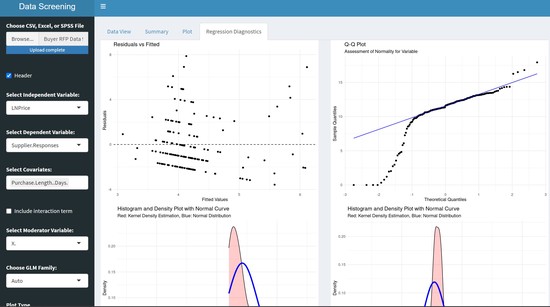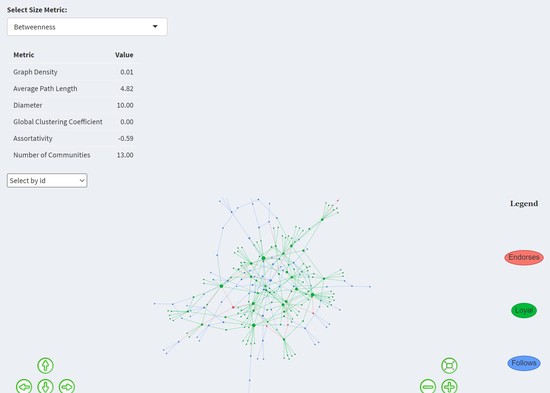Alec Pappas
Clemson University
Assistant Professor of Marketing

Clemson University
Assistant Professor of Marketing

Alec Pappas is an Assistant Professor of Marketing at Clemson University. His research interests include marketing strategy, sales, and intraorganizational social networks. Alec graduated in 2021 from Florida State University with his PhD in Marketing and began his academic career at Washington State University. Prior to academia, Alec worked in Philadelphia, Pennsylvania as a mortgage closer at Wells Fargo. He then moved to his hometown in Boca Raton, Florida and worked as an account manager at MotionPoint. At MotionPoint, Alec developed a robust knowledge of website construction and design while he managed relationships of approximately 50 Fortune 1000 companies.
In his free time, Alec enjoys photography, reading, coding, and remaining physically active with exercise and sports.
PhD in Business Administration (Marketing), 2021
Florida State University
B.S. Finance and Professional Sales, 2015
Florida State University
40%
40%
20%
Responsibilities include:
Responsibilities include:

This is a web application built using Shiny in R that allows users to assess and run generalized linear models that assess the …

This is a web application built using Shiny in R that allows users to run and download network analysis outputs without coding.

This is a link to my photo portfolio.

This is a web application built using Shiny in R that allows users to run and download quantile regression analyses without coding.
The purpose of this paper is to conceptualize the notion of thin crossing points from a social network perspective and to outline the concrete networking strategies that enable salespeople to foster mutually valuable resource exchange (i.e., to thin crossing points) across a selling ecosystem.
Technology has always challenged retail sales, with AI being the latest threat. Some predict the end of retail salespeople, but we argue that humans and technology complement each other in enhancing the customer experience. AI improves consistency, efficiency, and multitasking, while humans excel at relationships, creativity, and ethics. We propose a synergistic future where AI and humans work together, with humans ultimately prevailing in delivering a superior customer experience. We provide examples of retailers embodying this synergy and assess them through the “seven Cs” of customer experience. We conclude with managerial considerations and future research directions.
The authors introduce a strobelight analysis as a way to assess relationship inconsistency. Traditional methods like linear regression and structural equation modeling provide estimates that are conditioned on the mean. Quantile regression offers a more flexible way of looking at the relationship to assess portions of the relationship that may vary relative to the mean. By identifying these inconsistencies, authors can offer more nuanced guidance to managers. To assist with the strobelight analysis, the authors developed a user-friendly web application.
Selling is often associated with competitiveness, which has led many scholars to examine trait competitiveness as a driver of salesperson performance. However, it is also suggested that competitiveness contributes to less cohesive work environments which can have adverse effects on firms and their stakeholders. The authors explore this dichotomy by first conducting a field study utilizing multilevel, multi-source data acquired from 358 salespeople working at 86 offices of a large company. Using Mplus, the authors employ a 1-2-1 multilevel model to test the effects of trait competitiveness on work group cohesion, along with subsequent effects on sales performance and turnover. Findings reveal a surprising positive relationship between trait competitiveness and work group cohesion, with the latter reducing turnover likelihood. Thus, trait competitiveness has indirect effects, through work group cohesion, in reducing turnover, while having direct and positive effects on sales performance. Results of a follow-up qualitative study reveal that the positive relationship between trait competitiveness and work group cohesion can be attributed to the competitive focus (i.e. interpersonal, intergroup, or intrapersonal) of the individuals within the sales organization. Overall, this work shows that organizations can have both competitive salespeople and cohesive work environments, contributing beneficially toward sales output and turnover.
Despite the large body of research that examines the determinants of salesperson performance,significant variation exists regarding how scholars can operationalize salesperson performance using secondary, firm-provided data. Moreover, this variation often exists without explanation or justification. We explore the issue in three parts. First, we conduct an exploratory practitioner survey to discover various salesperson performance operationalizations (SPOs) in use by salespeople and sales managers. Second, using a carefully constructed and theoretically driven evaluative framework, we conduct a systematic review of the literature on salesperson performance that encompasses over thirty years of empirical research on the subject; this review allows us to better understand the SPOs that scholars use. Third, we compare these practitioner and scholarly perspectives to create a comprehensive conceptual model of the different types of SPOs. The model highlights theoretical insights and provides guidance to scholars, reviewers, and practitioners related to the selection of appropriate SPOs for meeting specific research objectives.